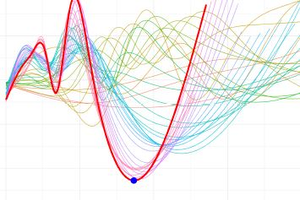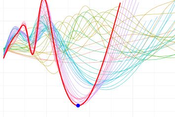Information
- Publication Type: Master Thesis
- Workgroup(s)/Project(s):
- Date: July 2019
- Date (Start): 2018
- Date (End): 24. July 2019
- TU Wien Library:
- First Supervisor: Ivan Viola
Abstract
Metaballs are a type of implicit surface that are used to model organic-looking shapes and fluids. Accurate rendering of three-dimensional metaballs is typically done using ray-casting, which is computationally expensive and not suitable for real-time applications, therefore di˙erent approximate methods for rendering metaballs have been developed. In this thesis, the foundations of metaballs and neural networks are discussed, and a new approach to rendering metaballs using Deep Learning that is fast enough for use in real-time applications is presented. The system uses an image-to-image translation approach. For that, first the metaballs are rendered using a very simplified representation to an image. This image is then used as input to a neural network that outputs a depth, normal and base color bu˙er that can be combined using a deferred shading renderer to produce a final image.Additional Files and Images
Weblinks
No further information available.BibTeX
@mastersthesis{horvath-2018-ism,
title = "Image-Space Metaballs Using Deep Learning",
author = "Robert Horvath",
year = "2019",
abstract = "Metaballs are a type of implicit surface that are used to
model organic-looking shapes and fluids. Accurate rendering
of three-dimensional metaballs is typically done using
ray-casting, which is computationally expensive and not
suitable for real-time applications, therefore di˙erent
approximate methods for rendering metaballs have been
developed. In this thesis, the foundations of metaballs and
neural networks are discussed, and a new approach to
rendering metaballs using Deep Learning that is fast enough
for use in real-time applications is presented. The system
uses an image-to-image translation approach. For that, first
the metaballs are rendered using a very simplified
representation to an image. This image is then used as input
to a neural network that outputs a depth, normal and base
color bu˙er that can be combined using a deferred shading
renderer to produce a final image.",
month = jul,
address = "Favoritenstrasse 9-11/E193-02, A-1040 Vienna, Austria",
school = "Research Unit of Computer Graphics, Institute of Visual
Computing and Human-Centered Technology, Faculty of
Informatics, TU Wien",
URL = "https://www.cg.tuwien.ac.at/research/publications/2019/horvath-2018-ism/",
}

 image
image Master Thesis
Master Thesis

